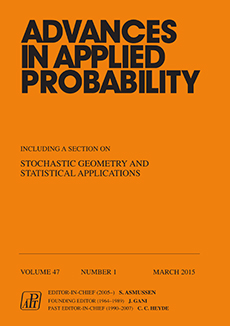Abstract
We consider a stochastic SIR (susceptible → infective → removed) epidemic model with several types of individuals. Infectious individuals can make infectious contacts on two levels, within their own `household' and with their neighbours in a random graph representing additional social contacts. This random graph is an extension of the well-known configuration model to allow for several types of individuals. We give a strong approximation theorem which leads to a threshold theorem for the epidemic model and a method for calculating the probability of a major outbreak given few initial infectives. A multitype analogue of a theorem of Ball, Sirl and Trapman (2009) heuristically motivates a method for calculating the expected size of such a major outbreak. We also consider vaccination and give some short numerical illustrations of our results.
Citation
Frank Ball. David Sirl. "An SIR epidemic model on a population with random network and household structure, and several types of individuals." Adv. in Appl. Probab. 44 (1) 63 - 86, March 2012. https://doi.org/10.1239/aap/1331216645
Information





